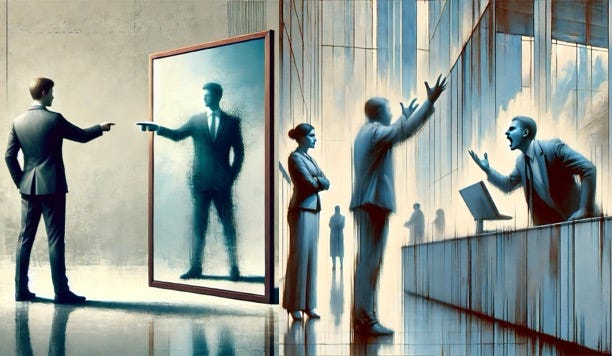
This weekend, I traveled to Las Vegas to watch the NBA Cup games with my son-in-law. We stayed at the Park MGM because of its proximity to T-Mobile Arena. Following instructions from MGM, I checked in through their app earlier in the day. Since we weren’t arriving until late at night, I wasn’t worried when the app said, “We are preparing your room.”
But by 10:00 PM, during my flight, I noticed something odd—my son-in-law had been assigned a room on his app, but mine still hadn’t updated. What was taking over six hours to “prepare my room”? Did they run out of rooms?
When we arrived at the hotel, a front desk employee explained the issue: my room hadn’t been assigned due to a problem with my credit card information. This was frustrating and poorly designed. If there was a credit card issue, the app should have prompted me to fix it or explained the situation. Instead, I was left guessing, assuming there was an issue with my room.
The Big Issue: Employees Who Aren’t Heard
As someone who has spent years designing customer experiences, I suggested to the front desk employee that he escalate this issue to prevent similar situations in the future. His response stunned me:
“They don’t listen to us about those types of things.”
Wow. MGM Resorts doesn’t listen to frontline employees about customer problems. That one statement speaks volumes—not just about MGM’s customer experience but also about its employee experience.
A Leadership Problem, Not an HR Issue
Let’s be clear: the front desk employee was not the problem. He was competent and handled the check-in well. The root cause is systemic—it’s about how MGM’s leadership designs their organizational culture.
Here’s what went wrong:
-
The app delivered a poor experience. It didn’t provide actionable or accurate status updates.
-
The company missed opportunities to act. MGM could have noticed the issue and resolved it proactively.
-
Employees were ignored. The frontline worker felt unheard regarding customer feedback.
-
The employee was disengaged. His use of “they” revealed a disconnect between leadership and the frontline team.
While it’s tempting to focus on fixing the app or refining processes, the last two issues—employee engagement and organizational culture—are the most critical.
Don’t Hate the Player, Hate the Game
In 2018, I introduced the Six Laws of Customer Experience. Law #5 states: Employees do what is measured, incented, and celebrated. Many leaders are perplexed when their organization fails to deliver better customer experiences. But the root cause isn’t as mysterious as it seems.
Employee behaviors almost always mirror the environment they’re placed in. This environment is shaped by:
-
Metrics: What the organization measures.
-
Incentives: What the organization rewards.
-
Celebrations: What the organization highlights and values.
These factors collectively drive how employees behave. Yes, there will always be a few individuals who go against the grain, but those cases are exceptions—not the norm.
The Key Question for Leaders
When issues arise, leaders often default to asking, “Who was the employee, and what did they do wrong?” This knee-jerk reaction frames problems as isolated incidents, placing undue focus on individual actions rather than the broader context. It’s a reactive approach that frequently results in “better training” as the go-to solution—a band-aid fix that rarely addresses underlying issues.
This mindset not only misses the systemic factors shaping employee behavior but also risks alienating your workforce. Employees quickly learn that mistakes lead to blame rather than constructive action, fostering a culture of fear rather than continuous improvement.
Instead of zeroing in on individuals, leaders need to zoom out and ask:
“What did we do to create an environment that encouraged the employee to act like this?”
This shift reframes the issue, recognizing that employee behavior is often a reflection of the environment they operate in. When organizations focus on fixing the ecosystem rather than scapegoating individuals, they unlock opportunities for lasting improvement.
The Takeaway for Leaders
If your frontline employees aren’t empowered—or worse, feel discouraged—to share customer insights, then your organization isn’t just failing customers. You’re failing employees, too.
Fixing systemic issues starts with leaders looking in the mirror. Ask yourself:
-
Are we fostering a culture that encourages employees to surface problems?
-
Do we provide tools and processes to act on customer feedback?
-
Are we creating an environment where employees feel valued and heard?
The Six Laws of Customer Experience also include Law #4: Unengaged employees don’t create engaged customers. When employees feel ignored or disengaged, those feelings ripple through to the customers they serve. The path to better customer outcomes begins with creating a workplace where employees feel their voices matter.
Sparking New Leadership Thinking
Here are actions leaders can take to shift their perspective and address systemic issues:
-
Create Reverse Feedback Loops. Build a system where frontline employees report customer issues, and leadership publicly responds with actions taken (or reasons why not). For example, a retail chain could hold monthly meetings where employees share recurring pain points, and leaders provide solutions or updates.
-
Shadow Employees as Active Participants. Require executives to periodically work alongside frontline employees. A hotel leader could spend a weekend checking in guests, identifying pain points firsthand, and building empathy for customer-facing staff.
-
Reward Problem Spotting. Incentivize employees to identify systemic issues, even without solutions. A transportation company could recognize drivers who consistently document recurring customer challenges, fostering a culture of proactive improvement.
-
Audit Internal Communication Tools. Test whether employees can easily report and escalate issues. For example, an airline could evaluate the usability of its employee reporting app, ensuring it’s intuitive and efficient for real-world use.
-
Close the Gap Between Promises and Delivery. Regularly audit customer-facing promises against what employees can realistically deliver. For example, a restaurant chain could involve employees in vetting promotions to ensure feasibility during peak hours.